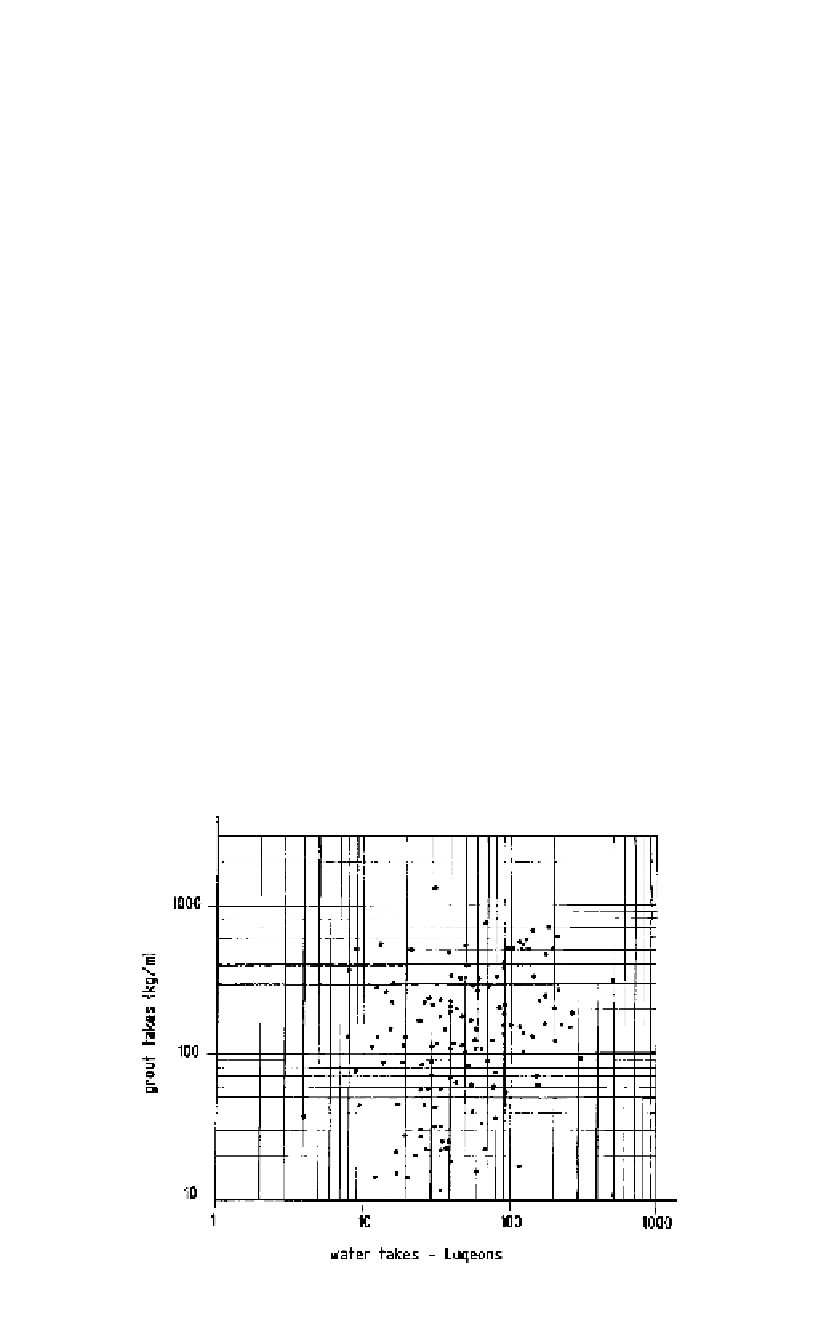Environmental Engineering Reference
In-Depth Information
with additional grinding. These microfine cements are available with significantly finer
particle size and enhanced ability to penetrate fine fractures. They are significantly more
expensive than conventional cements.
18.3.10
Prediction of grout takes
For contractual and cost estimating reasons it is necessary to estimate grout takes, i.e. the
volume of grout (or dry weight of cement) which will be absorbed by the foundation dur-
ing the grouting operation.
This is difficult to do with any degree of accuracy because the penetration of the grout
is dependent on fracture aperture, roughness, continuity and interaction with other sets of
fractures and grout viscosity, pressure, duration etc.
Bozovic (1985) in his general report of the ICOLD Congress concludes that the corre-
lation between grout take and Lugeon value is very weak. He suggested that considering
the different rheological properties of grout and water, a correlation cannot physically
exist. Figure 18.22 shows some data from Ewart (1985) which shows the poor correlation.
Ewart (1985) presents similar data for Aabach Dam, as do Sims and Rainey (1985) for
Gitaru Dam.
The authors agree that, if grout take and Lugeon value are compared directly, there is a
poor correlation. However they are of the opinion that, if joint spacing is used to estimate
fracture openings and grout penetration is estimated from grout particle size, grout pres-
sure, viscosity and time, it should be possible to obtain a better prediction of grout take.
It is not expected that accurate prediction will result, only an improvement in the ability
to predict. If this approach is coupled with grouting trials on the dam foundation it should
be possible to achieve reasonable accuracy.
It is concluded that the best approach is to gather data from dam sites in similar geolog-
ical environments and make initial estimates of take per metre of grout hole on this
basis. For any reasonable degree of accuracy trial grouting on a representative part of the
dam foundation will be required, with careful monitoring of takes in primary, secondary,
Figure 18.22.
Grout take vs Lugeon value (Jawantzky, in Ewart, 1985).

